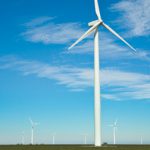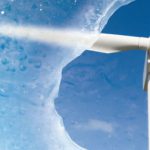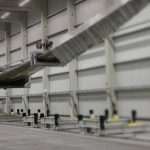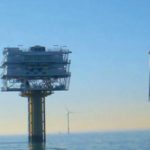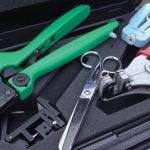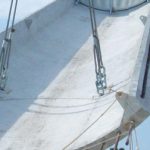During the early years of the North American Wind Industry, the general misconception regarding blade maintenance was that once the blades were in the air, routine maintenance was not required. As the industry matured, some tough lessons were learned. Maintenance, especially on the leading edge of the blade, is not only recommended but essential if blades are to reach their design life expectancy.
In this article, CWC offers answers to the most frequently asked questions by owner/operators using real-life experience data. Those questions are:
• What measures can be taken to reduce the costs associated with rotor blade maintenance?
• At what point in the life of a rotor blade does the leading edge require attention?
• What detrimental effects will result if the blade leading edge isn’t maintained?
As the name suggests, the leading edge of a blade is the foremost edge of the airfoil or the part of the blade that first contacts air. Any turbine located in terrain that has an abundance of dust, bugs, rain, sleet, snow or any other abrasive air particulate is more susceptible to erosion than a turbine located in an area where these factors are not present. Since wind farms are typically constructed in rural areas where farmers turn the soil multiple times every year, and weather pattern changes are a common occurrence, the majority of all blades manufactured are subjected to abrasives daily. Image 1
To mitigate leading edge erosion, many manufacturers offer leading edge protection in the form of a tape or paintable coating; however, not all do. Companies purchasing blades should be sure to make it clear to the original equipment manufacturer that leading edge protection should not be an optional feature. The small increase in cost to apply leading edge protection during manufacturing will be worthwhile throughout the life of the wind farm. The application of leading edge protection will aid in the prevention of erosion, provided the protection isn’t damaged during shipping or construction. The smallest tear or scratch in leading edge protection will result in a weak link and a point where the erosion will initiate. There are also significant differences in each form of protection, so it’s best to do your research before choosing the protection that best suits your needs. It’s important to understand that even the best leading edge protection system isn’t infallible; therefore blades should be inspected periodically to make sure they are still in good shape.
Unfortunately, leading edge erosion begins early in the life of a blade. If leading edge protection has not been applied during the manufacturing process, blades as young as three years old will begin to show signs of wear. The tip of the blade is more susceptible to wear due to the operating speed of the blade at the tip; however, erosion does present itself inboard of the tip at this stage as well. Even if leading edge protection has been applied, quality issues, perceived as minor in the factory, also play a role in the rate at which a leading edge degenerates. Small air pockets along the leading edge are routinely overlooked and covered up with coating. As the blade bends and flexes, these air pockets expand and contract causing the leading edge to erode from the interior of the coating. Image 2 Simultaneously, external debris causes deterioration on the leading edge from the exterior. When erosion is identified in the early stage, repair is relatively inexpensive when compared to waiting until more severe coating damage appears. If repairs are not done early, damage to the underlying laminate will be present as early as year five. Regrettably, there remains a large gap in the knowledge and experience of those performing rotor blade repairs, and often the wrong choice of materials is used to repair laminate damage. Generally, cost is the driving factor when improper materials and an insufficient repair program are chosen. Although the cost of repair is much lower, a repair using incorrect materials will only mask the damage for a short period of time before a compounded problem returns.
When leading edge erosion is not repaired or is repaired incorrectly, the health of the blade and the turbine is jeopardized. Vibrations create undesirable loads that neither the turbine nor the blades were designed to carry. Chordwise and spanwise cracks in the blade coating occur. A blade shell is made of a “sandwich structure”, either balsa or foam core with laminate layers on either side. Over time, the laminate under the coating cracks and water enters the core material of the blade. As freeze-thaw cycles occur, the blade core expands and contracts separating the laminate from the core. A waterlogged core is also cause for an unbalanced rotor which leads to more unwanted vibrations throughout the drivetrain. When a blade sustains this level of damage, repair options are limited. Either the blade must be brought to the ground to be repaired, which will cost a minimum of $75,000 per set, excluding crane costs; or new blades can be purchased, which is an even more expensive option than that of repair.
The information provided, is based on 16 years of experience in rotor blade inspection and repair and portrays an accurate picture of what can be expected if blades are not maintained properly. Even though there are factors other than leading edge erosion that can cause a blade to fail, the chances that a blade will reach its desired life expectancy are greatly increased if the leading edges are maintained.






















